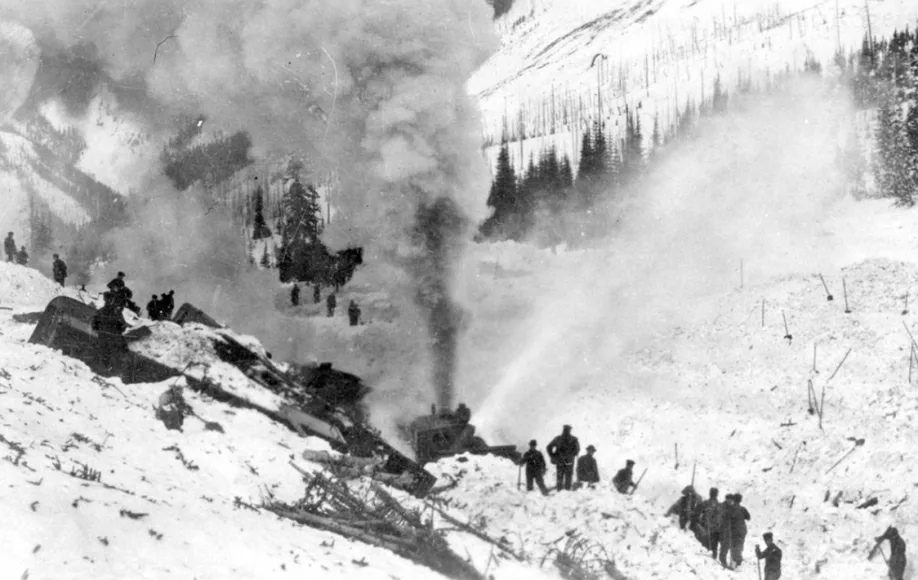
Canada's worst avalanche is the 1910 Rogers Pass disaster, a preventable tragedy
Out of the 63 workmen, there was only one survivor.
This Day In Weather History is a daily podcast by Chris Mei from The Weather Network, featuring stories about people, communities and events and how weather impacted them.
--
Revelstoke, B.C., is home to Canada's worst avalanche disaster.
On March 4, 1910, an avalanche killed 62 men while they were clearing snow from the railway on Rogers Pass, which runs through the Selkirk Mountains. Revelstoke's history is inextricable from its railway system.
The city was founded in the 1880s when the Canadian Pacific Railway (CPR) was constructed through the area.
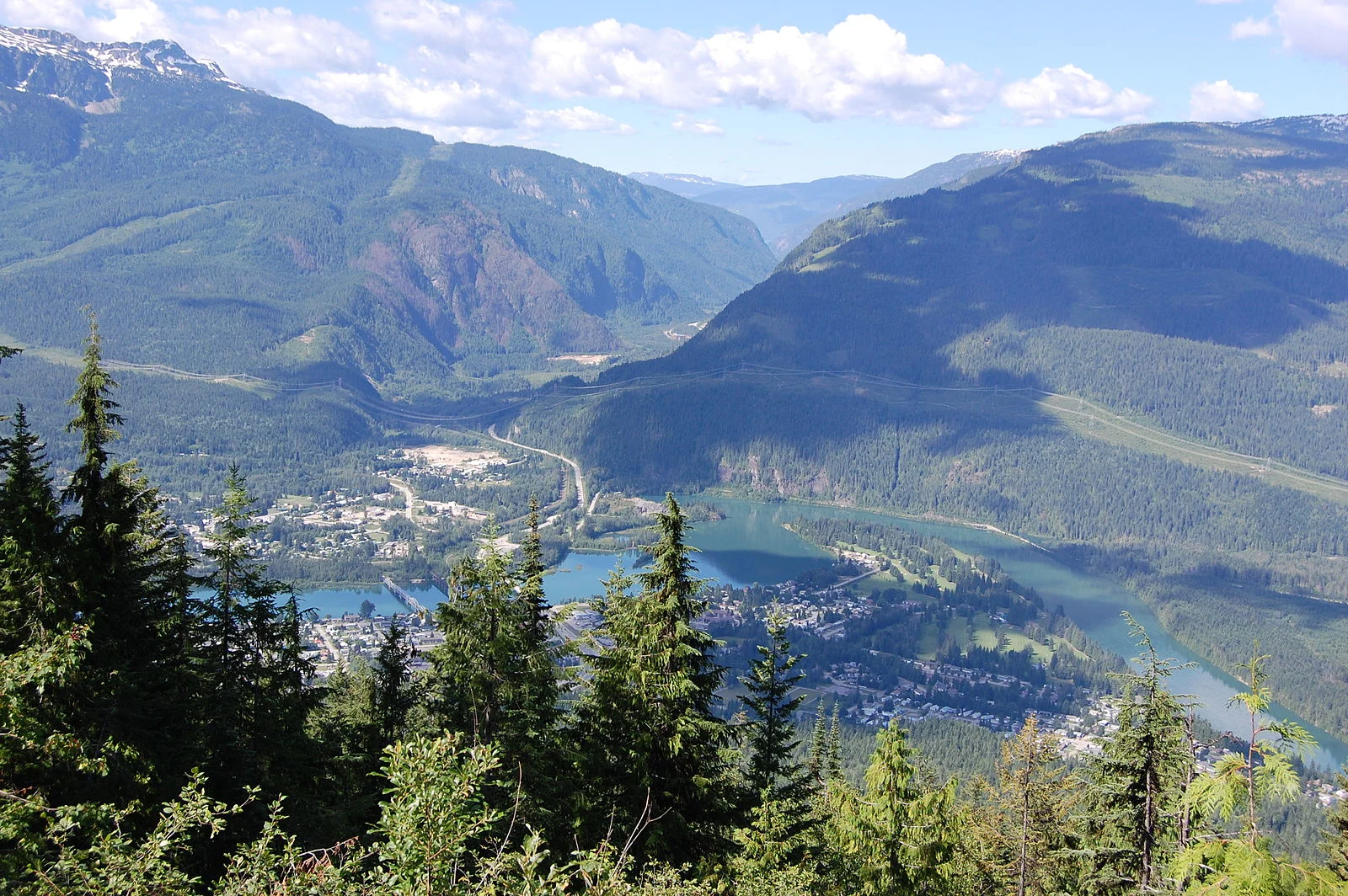
Revelstoke from Mount Revelstoke. Courtesy of Wikipedia
Revelstoke was named by the CPR, in appreciation of Lord Revelstoke, the head of the U.K. investment bank that helped save the railway line from bankruptcy in 1885 by buying the company's unsold bonds.
So Revelstoke is Revelstoke because of its railway.
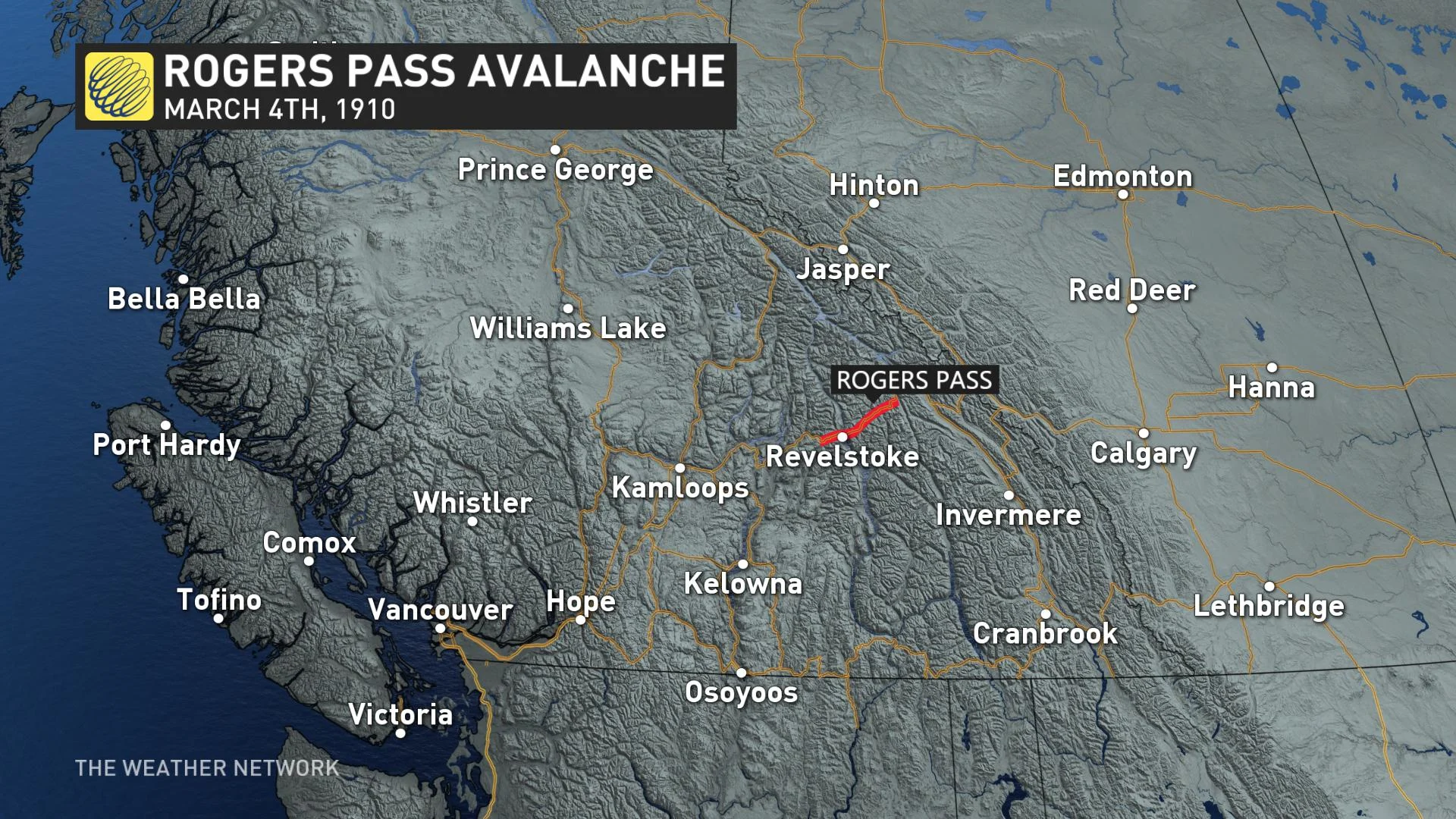
It's also a very snowy area. The city holds the Canadian record for the snowiest winter. During the winter of 1971-72, a total of 2,447 cm of snow fell on Mount Copeland, and the town received 779 cm.
Click here to subscribe to This Day in Weather History
The Rogers Pass was completed in November 1885. There were snow sheds in the area, which are avalanche prevention structures, but there were vulnerable areas of the track that couldn't be protected. So, men and equipment were often called upon to clear the track after an avalanche buried it in snow.
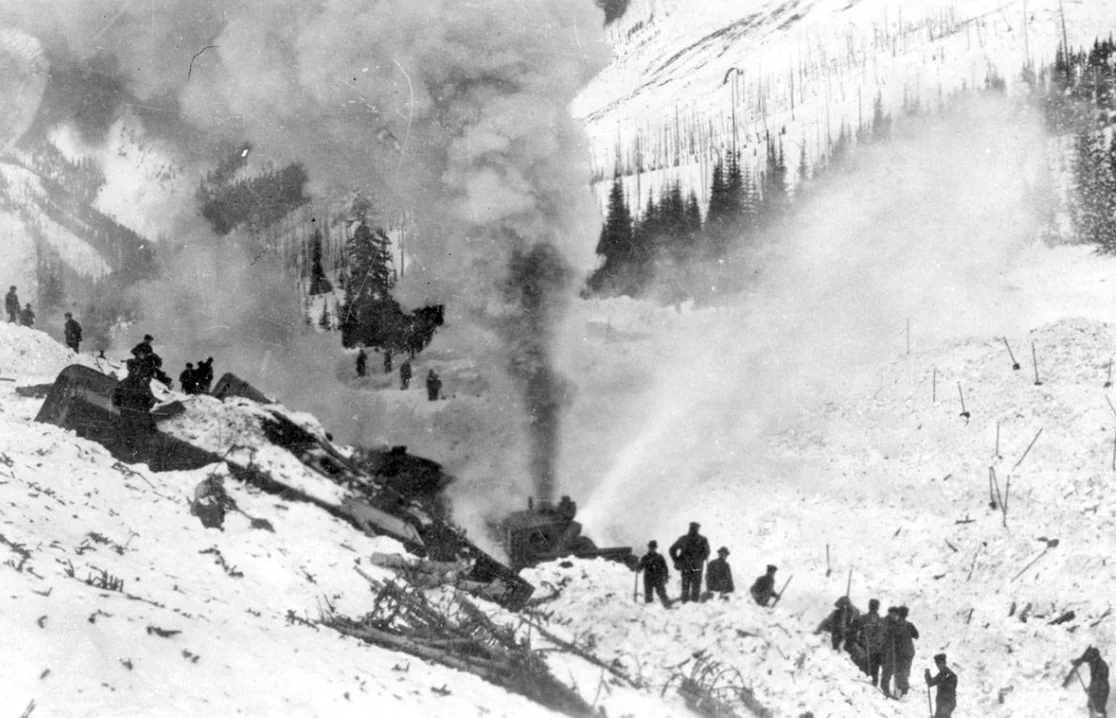
Courtesy of Revelstoke Museum and Archives
On March 4, a crew headed to clear the tracks from a big slide that had fallen from Cheops Mountain. 63 men and a locomotive-driven rotary snowplow were sent to clear the tracks.
There was urgency because a westbound CPR Train was just entering the Rocky Mountains and headed for Vancouver.
At 11:30 pm, the crew was almost finished clearing the track when an avalanche came crashing down from Avalanche Mountain.
The locomotive and plow were thrown 15 metres and landed upside-down on the ground. The cars behind the locomotive were crushed and 62 out of the 63 workmen were instantly buried in deep snow. Billy Lachance, the locomotive fireman, was the only survivor.
Railmen, physicians and nurses headed to the scene, but there were no casualties to treat. The rescue mission turned into a body recovery mission. Many bodies were found standing upright and frozen in position.
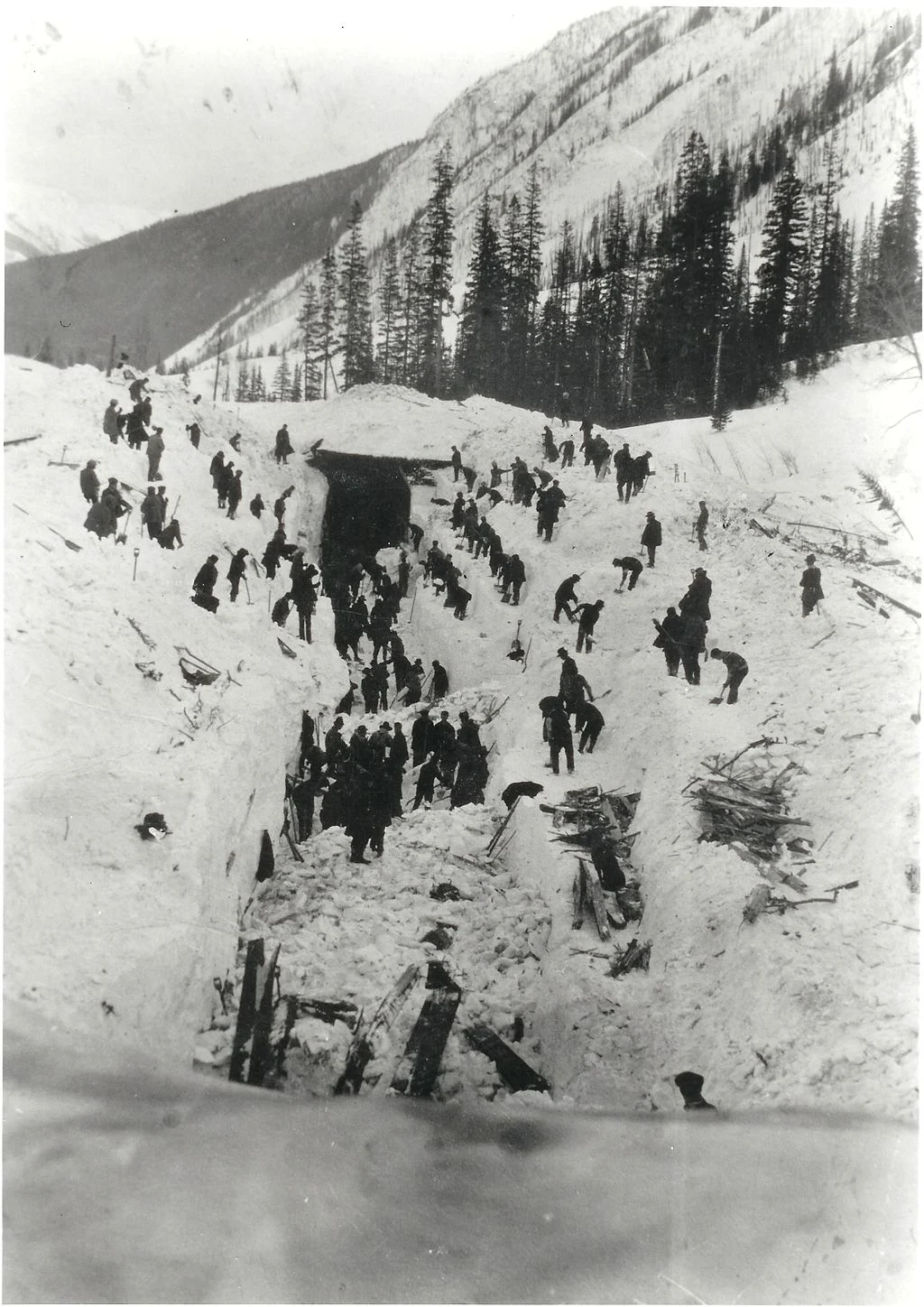
The aftermath of the Mar. 4, 1910, avalanches in Rogers Pass, British Columbia, Canada. Fifty-eight men died in what is still the nation's worst avalanche disaster. Courtesy of Wikipedia
Since the Rogers Pass' construction, avalanches have killed more than 200 people in the area. The CPR closed the pass in 1913.
To learn more about the 1910 Rogers Pass avalanche, listen to today's episode of "This Day In Weather History."
Subscribe to 'This Day in Weather History': Apple Podcasts | Amazon Alexa | Google Assistant | Spotify | Google Podcasts | iHeartRadio | Overcast'
Thumbnail courtesy of Revelstoke Museum and Archives